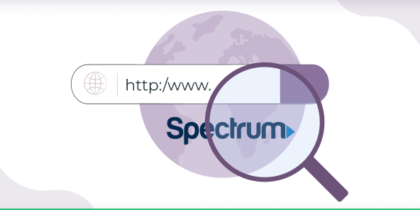Nowadays, almost everyone has fallen victim to online attacks. With millions of dollars being spent on online shopping daily, evil actors dupe you into thinking that a website and it’s payment gateway are authentic.
It is sometimes difficult to verify if a website is legitimate or a scam. Surprisingly, there are some easy ways through which you can spot out fraudulent websites.
Steps to Identify if a Website is fake, scam, or fraudulent
Keep an eye on the URL
Most people pay less or no attention to their browser address bar, which is a huge mistake that should be addressed. The address bar can contain a lot of vital information about you and how secure your connection is.
In phishing, the most practiced technique is to create a website that is unidentifiable from the real website. Hackers copy the URL and create sub-domains whose domain mimics from the actual domain, and the user didn’t think much about it.
To examine the URL, you need to learn how a URL is built.
Guillermo Berasategui Crespo, Technical SEO specialist at Red Points, has the following to share:
Most important of all keep an eye on the domain name, many scam websites use little variations that could easily be a typo e.g purepvn.com (this is known as typosquatting).
Make sure that the website is secure (little padlock before the URL), any website not working on an HTTPS protocol that asks any kind of data from you should be considered unsafe.Other telltale signs you could pay attention to are: the quality of the images the site is using, the existence of grammar and spelling mistakes, on-site review system and especially their social media presence as most of genuine brands and site will try to maintain a healthy presence on multiple social media sites.
HTTPS or the Green Padlock

HTTPS stands for Hypertext Transfer Protocol Secure, is an extension of the Hypertext Transfer Protocol. It is used to communicate securely, and the Transport Layer is used to encrypt the communication and to prevent the conversation from being intercepted and spied by anyone except you and the website you are connected to.
“Green Padlock” is also an easy way to check if a website is secure or not. It’s right to a certain level, but it is important to note that the site that uses HTTPS is fully secured from all vulnerabilities and is a legitimate website. It’s not like that! Recently scammers and hackers have somehow found out the way to use HTTPS to trick potential victims into a false sense of security.
So, while the green padlock is still an excellent way to identify if a website is secure or not, but it doesn’t mean it’s legitimate.
Learn the difference between HTTP vs. HTTPs.
Identify Phishing Attempts & Overcome

Phishing is an attack to trick someone, usually through fake messages, through an email, to take control over their login and credit/debit card details. Phishers often try to compose an email that looks too much like the one from a well-known organization. Let’s say the one is working in Microsoft. Still, you can expect to see phishing emails received pretending to be from other organizations such as Google, Apple, and other reputable companies.
There are such phishing attempts that are very attractive, and any untrained eye can think like it is a legitimate email. But there are several ways to identify if an email is a scam or fake. The thing to look at is the email address is very odd (often), the sure-fire giveaway is poor grammar and spelling that is used.
If anything is noticed like that, the email is probably fake. If one is still not sure if the email is fake or real, then, for example, an email you received is claiming that your account was signed in from an unknown location. Do not click or follow the link. It can be suspicious. Instead, make yourself to the website.
Also, one of the ways to do phishing is through the website. Hackers create copies of the site and want to steal your data. Nowadays, most of the browsers warn the user if they notice any illegal activity about a website, it’s better to pay attention to that. If you didn’t get one than preferred to look at URL, it would be different from the real/legitimate one.
If one wants to test his/her skills about how good they are at detecting phishing attempts, try Google’s phishing quiz.
Damien Buxton, from Midas Creative, has the following to share:
Aside from using online products and services to try and block these types of sites, one of the best tools you have in your arsenal is your own common sense. Many fake websites will have a hook or a lure to get you to part with your money. They usually will have some type of huge discount, offer or make outlandish product claims, all in the hopes of enticing you in.
For instance, if you’re shopping online looking for a great deal and stumble upon a site that is offering a 70% discount compared to the majority of what other sites offer, be very wary. The old saying, “if it sounds too good to be true, it probably is” should be a mantra you live by. If you are tempted by the site, do your homework, if you’re still not entirely convinced, walk away.
How to Stay Secure?

While a VPN won’t directly protect you from phishing attacks, it can enhance your online privacy and security by offering AES 256-bit encryption or protect your data from a scam website. Apart from offering supreme encryption, a VPN will give you the ability to go incognito on the web.
With the ability to go anonymous online, your online data and online activities are secured from malicious actors. If a hacker does manage to intercept your online traffic, all they’ll get is gibberish information which is of no use to anyone.





